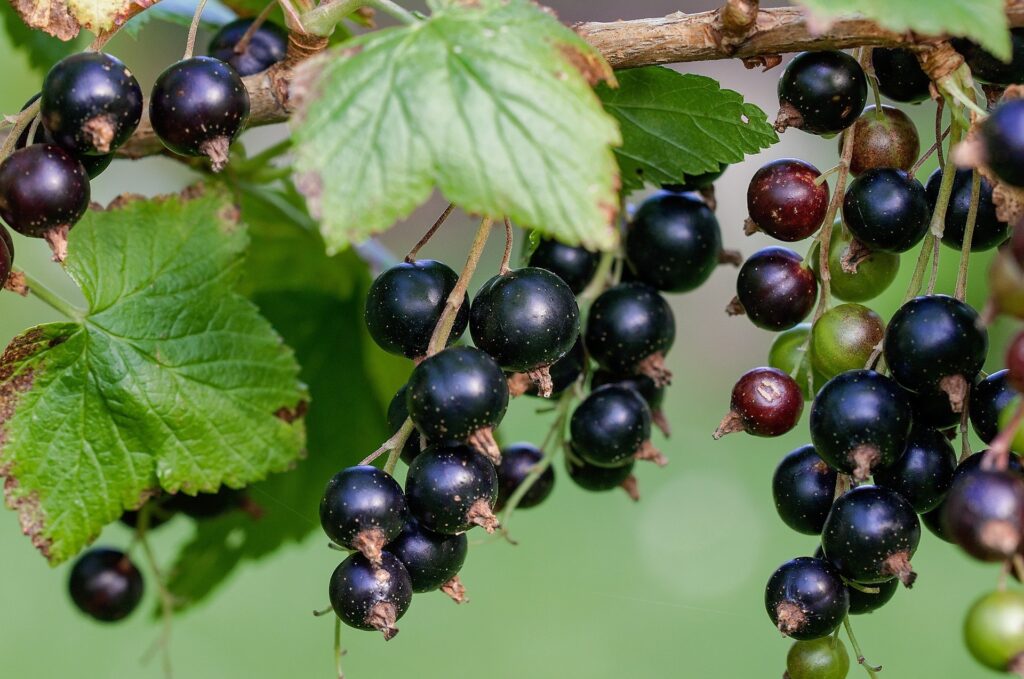Cassis
Ribes nigrum L.
Grossulariaceae
“There is no one who, having gardens, should not plant a large number for the needs of his family”
Pierre Bailly de Montaran dans Les propriétés admirables du cassis, 1712
A little bit of history
Blackcurrant is an aromatic, deciduous sub-shrub that grows spontaneously in mountainous and cold regions. It appreciates wetlands, swamps, peat bogs and river banks. The wild blackcurrant is found, for example, not far from l’Herbier du Diois, at the sources of the Drôme.
Its appearance in gardens dates from the Middle Ages in the countries of northern Europe: Germany, the Netherlands, Denmark and in the Baltic countries. The fruits are first harvested and used fresh, then for the production of juices, jams, wines and liquors. The dried leaf is used in herbalism as a diuretic, in particular against gout disease.
In 1712, Abbé Pierre Bailly de Montaran devoted an entire work to blackcurrant, entitled « Les propriétés admirables du cassis », which played a major role in extending its medicinal use and popularizing its cultivation in France. He gives a recipe against rheumatism: “Take a good handful of blackcurrant leaves with as much bay laurel, sage and rosemary. Put everything in an earthenware pot or closed jar and fill it with white wine, then put in a gentle heat or in the sun for twenty-four hours ”. This is the oldest mention of the anti-inflammatory action of black currant, since widely studied.
An intensifying culture: the emergence of kir
Large-scale cultivation of blackcurrant was established around 1750 in the Dijonnais, as a complement to the vine. The blackcurrants form hedges on the edge of the vineyards. Often, it is the winemaker’s wife who takes care of it. In the 1880s, the phylloxera crisis destroyed a good part of the Burgundy vineyard. The cultivation of blackcurrant is expanding, driven by the production of liquor.
In the middle of the 20th century, Félix Kir, canon and politician, became mayor of Dijon and deputy for Côte-d’Or. He allows blackcurrant liqueur producers to use his surname to designate a now well-known aperitif, kir, made up of one-third crème de cassis and two-thirds aligoté. The region becomes the heart of large-scale production and several varieties are selected there, such as “Cassis Noir de Bourgogne”.
Other uses
The blackcurrant bud is used in gemmotherapy, for its anti-inflammatory properties, but also in perfumery for its green and fruity notes. It takes 45 kg of bud to produce 1 kg of blackcurrant absolute, necessary for the development of a perfume such as Cerruti 1881 or Dune by Christian Dior.
In 2010, the European Medicines Agency recognized the traditional use of blackcurrant leaves and berries “to relieve minor joint pain and to increase the amount of urine as a complementary treatment for urinary tract infections”.
As for the fruit, it is experiencing a resurgence of use as “super fruit”, a term used for fruits particularly rich in antioxidants, here vitamin C and anthocyanins.
